Starting a blog is a powerful way to share your thoughts, ideas, and opinions with the world, but keeping it up and making sure it solves readers’ problems is a different story.
If you want to ensure your blog is successful, engaging, and effective there are some best practices you should follow and implement on your blog.
In this article, we will define blogging best practices and the best practices you should implement in your blog to ensure its growth.
We make every effort to make this article as helpful as possible by going into detail at every point. You can skip to any section you want to read by clicking any of the links below, which will take you to that section.
Let’s get started.
What Is Blogging Best Practices?
Blogging best practices are the guidelines and strategies that every blogger should use to ensure the success, engagement, and effectiveness of their blogs. These best practices cover everything from defining your blogging niche to planning your content to promoting your blog to engaging with your audience.
As a blogger, if you want to grow your blog, increase engagement, and structure it in a way that is friendly to your readers, you should implement these best practices.
With that in mind, here are the top 15 blogging best practices you should be aware of in order to grow your blog.
15 Blogging Best Practices
- Decide Your Blog Target Audience
- Choose Your Blog Niche And Stick To It
- Do Keyword Research For Topic Ideas
- Create The Best Blogging Format
- Use Click-Worthy And Engaging Titles
- Write High-quality Content
- Write Effective Meta Descriptions
- Do Internal And External Linking
- Use Visuals In Your Blog Post
- Reduce The Size Of Your Images
- Promote Your Blog On Social Media
- Spy On Your Competitors Blog
- Consistently Publish New Blog Posts
- Update Older Blog Post
- Use Tags To Organize Your Blog Posts
1. Decide Your Blog Target Audience
The most important step in creating a successful blog is deciding on and understanding your blog’s target audience.
Your blog’s target audience is the set of people you want to reach with your content, and understanding their needs and areas of interest is important in creating content that they will find engaging and useful.
The best way to better understand and decide on your blog target audience is to understand their goals. What exactly are they trying to achieve? What issues or problems are they trying to solve?
Understanding your audience’s goals will make it easier for you to create content that helps them achieve those goals and solves their problems.
Apart from your audience goals, it’s also important to keep your own goals in mind when deciding on your blog’s target audience. This involves you knowing what you intend to do with your blog
Are you trying to create a personal brand? Do you want to monetize your blog? Do you want to become known as an expert in your field? Understanding your own goals can also help and make it easier for you to create content that aligns with those goals and attracts the appropriate audience.
After you’ve decided and identified your blog’s target audience, the next step is to choose a niche for your blog that aligns with your audience.
2. Choose Your Blog Niche And Stick To It
If you want to be known as an expert in your field, choosing a particular niche for your blog and sticking to it will help you achieve that goal, and people will begin to see you as a thought leader in that niche.
A niche is a particular topic or subject on which your blog content focuses or on which you write content. It can be food, travel, fashion, health, technology, or any other area of interest. For example, if you have a fitness blog, your niche is “health“.
There are so many topics and subjects to choose from, each with its own set of advantages and disadvantages. However, it is important to choose a niche in which you are passionate and interested, and then stick to it.
Don’t be confused. When I say stick to it, I mean that you should choose a particular niche and write content on that niche. Don’t write on this niche today and then write on another niche tomorrow that is unrelated to that particular niche.
For example, if you choose the health niche, only write about health. Don’t write about health today and then write about fashion tomorrow. If you choose the health niche or the fashion niche, only write about it. I hope you understand.
Writing about a particular niche can help you differentiate your blog from others. Because there are millions of blogs out there, it is important to find a way to stand out. To stand out from other blogs you need to focus on a particular niche, you can also develop a unique selling proposition (USP) for your blog that will set it apart from the competition.
It is also important to consider the profitability of the niche you choose. If you want to make money from your blog, you should choose a niche that has monetization possibilities. Look for profitable blogging niches that can be monetized through affiliate marketing, advertising, sponsorships, and other revenue-generating methods.
To help you in choosing a profitable blogging niche, we have published a post on the profitable blogging niche ideas you can choose for your blog. Please click here to read it.
Note: We included deciding on your blog’s target audience and niche in this list of blogging best practices because these are the two most important steps in creating a successful blog.
Also Read: What Is A Niche In Blogging And Why Is It Important
3. Do Keyword Research For Topic Ideas
After you have identified your target audience and chosen your blogging niche to find topic ideas to write about on your blog you need to do keyword research.
Keyword research is very important in blogging best practices because it can help you understand what your target audience is searching for online, as well as the words and phrases they are using.
If you can know the words and phrases your target audience is searching for, you can create content that is aligned with their needs and interests. This can help to increase the visibility of your website in search engine results pages (SERPs) like Google search and drive traffic to your blog.
There are lots of free and paid keyword research tools available to help you find topic ideas, including KWFinder, SEMrush, Ahrefs, Google Keyword Planner, and others.
However, we recommend the KWFinder tool because it can help you find long-tail keywords with low SEO difficulty, which is important if you want to rank your blog post on search engines like Google and Bing because writing on high SEO difficulty reduces your chances of ranking because the keyword is already competitive.
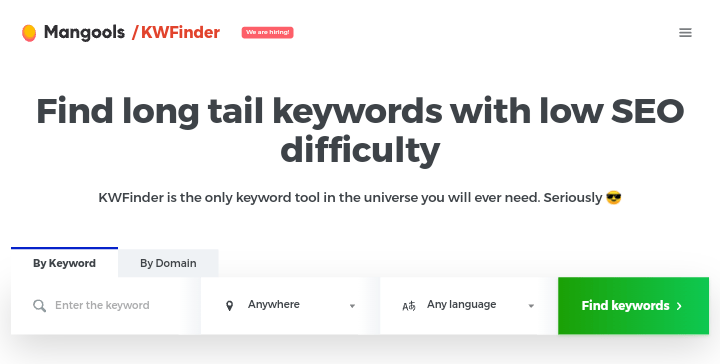
Signed up for a KWFinder account to start doing keyword research and there are also a few important factors to consider when doing keyword research. These include the monthly search volume, keyword difficulty, relevance, intent, and trends.
Search Volume
Search volume is the number of searches performed for a particular keyword or phrase in a given period of time. The higher the search volume, the more people who are searching for that keyword, and the more potential traffic you can bring to your blog.
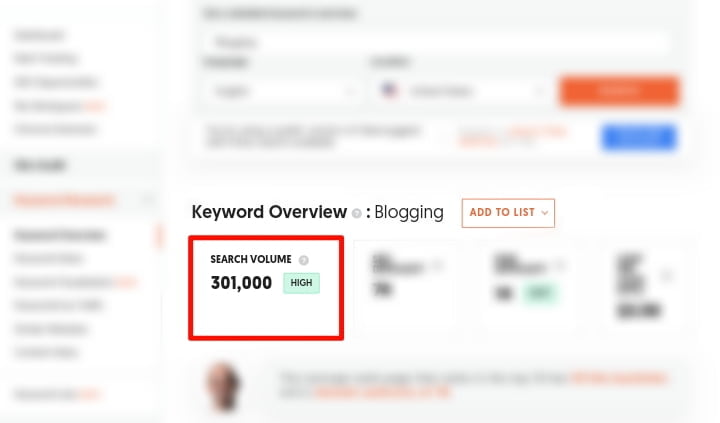
If you want to increase your blog traffic and attract more visitors from search engines, write about keywords with a high monthly search volume. Keep in mind that keywords with a high monthly search volume usually have more competition, so you should know what to do.
Keyword Difficulty
Keyword difficulty is the difficulty of ranking for a particular keyword or phrase in search engine results pages (SERPs). The higher the keyword difficulty, the higher the competition for that keyword, and the more difficult it will be to rank for it.
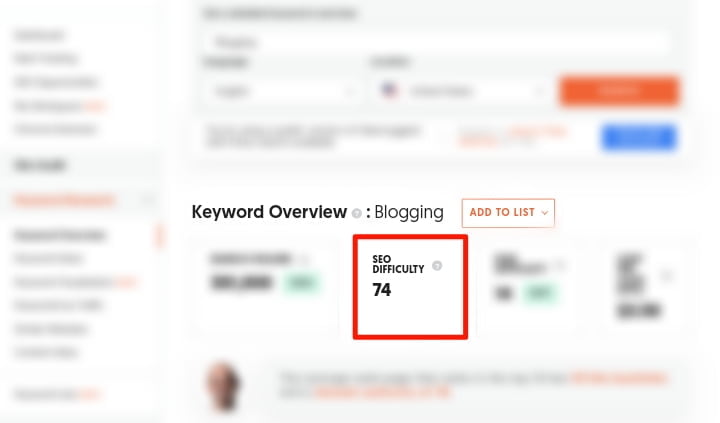
When doing keyword research, it is important to find the appropriate balance between high search volume and low keyword difficulty. We recommend you write on keywords with low difficulty if your blog is new.
After doing keyword research and you find the keywords you want to write about on your blog that is related to your niche. Include the keyword in your blog title, the body of the post, the URL, and the meta description.
4. Create The Best Blogging Format
If you want to attract readers to your blog, keep them engaged, and keep them coming back for more content, creating the best blogging format will help you do so easily.
This includes creating a clean and simple design for your blog, which will make it easier for your readers to read and navigate your content. The best way to achieve this is to use a minimalist design with plenty of whitespaces for your blog. The use of too many colors, fonts, or graphics can distract readers and make them leave your blog.
Whitespace (also called negative space) is the empty space around a web page’s content and elements. It is used to balance the design of the page, organize the content and elements, and improve the user’s visual experience.
Use responsive design to ensure that your blog looks good on all devices, including desktop computers, laptop computers, tablets, and smartphones. Use a responsive theme or template, and test your blog on various devices to ensure that it looks good and functions properly.
There are many free WordPress themes that you can use to create a responsive design for your blog. The WordPress theme we have used so far is the Kadence Theme. To learn more about the theme and its features, read our Kadence Theme Review.
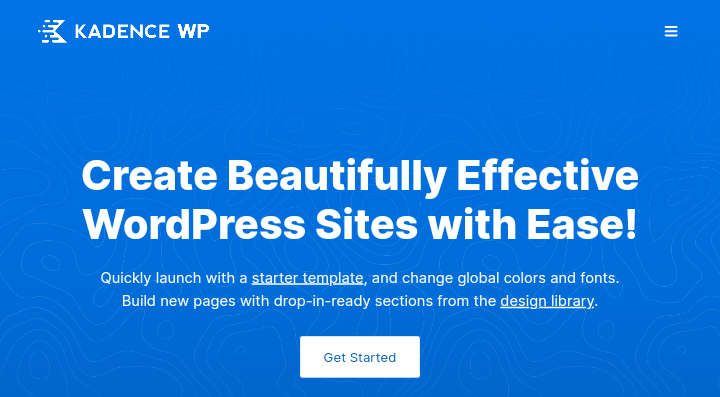
Use headings and subheadings to divide your content into sections and make it easier for readers to scan your posts. Use H1 tags for your post’s main title, H2 tags for subheadings, and H3 tags for additional subheadings. Also, add a table of contents to your post to allow your readers to skip to a particular page on your blog; this is also important for SEO.
Also, divide your blog post into short paragraphs of three to four sentences. This improves the readability and digestibility of your content. Use bullet points or numbered lists to organize your content.
Because most visitors do not read web pages in the same way they would read a novel or a magazine. Instead, when visitors arrive at your blog, they will most likely scan it for answers to their particular questions. Additionally, they do not have the time to read every single word.
5. Use Click-Worthy And Engaging Titles
If you want to get traffic and attract readers to your blog post, you need to use a click-worthy and engaging title. It’s the first thing readers see on search engine results pages (SERPs) when they search for a particular keyword, and it can make or break your content’s success.
Questions keywords are currently trending, and more people are using them to search for answers, instead of using the general search keyword. For example, instead of using a general keyword like “blogging“, people intend to use a question keyword like “how do I start blogging?“.
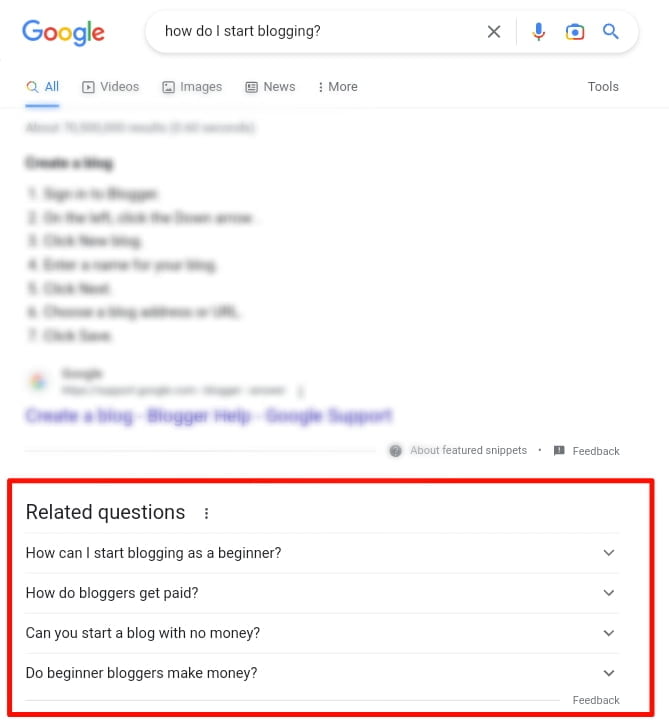
Making use of a question keyword in the title of your blog post can help capture readers’ attention and attract them to click on your post from search engine results pages (SERPs) to find the answer they are searching for.
Also, make sure that the title of your blog post accurately reflects the content of your post. Keep the title short and simple, between 5 to 15 words, because a long or complicated title may turn off readers.
Your titles should also match up with the reader’s intent. People read content with a particular goal in mind, such as learning something new, solving a problem, or being inspired. Your title should reflect your audience’s intent, so they know exactly what to expect from your post.
6. Write High-quality Content
Write high-quality content that solves your readers’ problems. Your content should be for your readers, not for SEO. Many bloggers make the mistake of writing for SEO rather than for their readers.
Search engines like Google are becoming smarter day by day, and they have a method of detecting content written for SEO, so if you want to rank your content on the first page of Google, write high-quality content for your readers that solves their problems.
What you want to write about on your blog and what your reader wants to read aren’t always the same thing. So know what your reader wants, what their problems are, and how your content can help them. Write about topics that are important to your target audience. They are only interested in what can help them, not what you do.
This will make it easier for you to create high-quality content that solves their problems. For example, if you sell cooking equipment, don’t discuss how to produce it. Discuss how they can choose the best cooking equipment for their kitchen and which cooking equipment is best for them.
By creating high-quality content for your blog, you can easily attract new readers and keep them coming back for more. It can also help in improving your search engine rankings and increase your blog presence.
7. Write Effective Meta Descriptions
Meta descriptions are an important part of on-page SEO because they influence click-through rates (CTR). A meta description is a type of HTML element that summarizes the content of a particular webpage. It appears alongside the page title in search engine results.
The meta description tag on a page is displayed as part of the search snippet in a search engine results page (SERP) like on Google search and is intended to provide the user with an idea of the content on the page and how it relates to their search term.
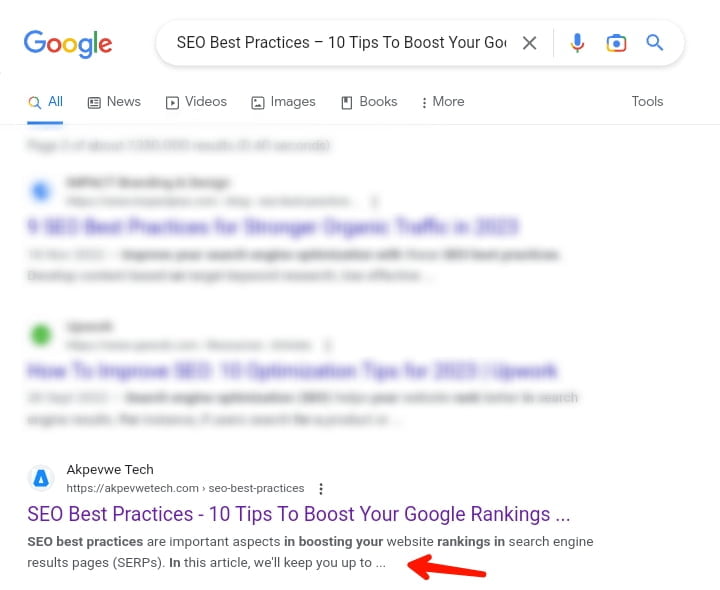
Even though there is no direct SEO benefit from the meta description, search engines usually do not include it in their ranking algorithm. However, there is a side benefit to it Google uses click-through rate (CTR) to determine whether your post is a good result.
If more people click on your post on the search result, Google considers you to be providing helpful content and will increase the rankings based on your position. This is why optimizing your meta description, as well as your titles, is important.
There are lots of free WordPress SEO plugins available that allow you to edit such markup and change your meta description directly within the code or through the meta description field within the page’s metadata settings.
For example, If you use the RankMath SEO plugin you can easily add or change your post meta descriptions and title by clicking on the RankMath icon on the top right corner and changing it from there.
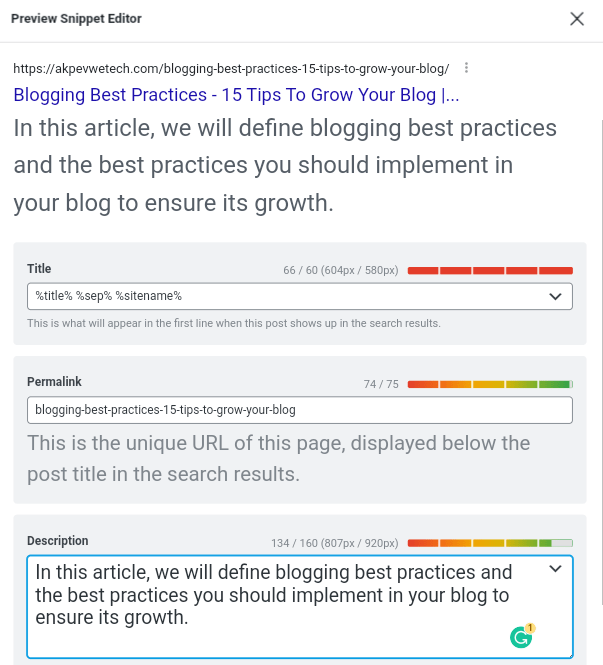
Keep your meta descriptions short, between 150 and 160 characters. Google suggests you can make your meta descriptions as long as you want, but there is a limit to what we can see in search engine results pages (SERPs), which is around 155 characters; anything longer will be shortened.
8. Do Internal And External Linking
Internal and external linking is the best blogging best practices to follow and they are also the two most important aspects of search engine optimization (SEO) which can have a strong impact on the visibility and ranking of your blog.
Internal linking is the practice of linking to other pages on your blog. These links are usually located within the content of your webpage and can help users to easily navigate your blog more.
While external linking is the practice of linking to other websites from your own blog. These links can be useful for a variety of reasons, such as increasing user satisfaction and providing additional context for your content.
Internal links to other of your blog post that is related to the content on your blog. For example, if the blog post is about “how to start blogging“, then you can include a link to another one of your blog posts about the “best blogging platform“. This helps readers in finding additional information on the topic and helps search engines in understanding the context of the post or page.
External links to other blogs or websites that provide more detailed information about your blog post that is related to the content on your blog that you believe your readers will find valuable.
For example, if the other blog post is about “how to start blogging” and you have already published a blog post about that topic on your blog, you can include a link to that blog post so that your readers can learn more about that post.
It is a good practice to use no-follow links when linking to external blogs or websites. This tells search engines not to pass rankings to the linked post or page, which can help your blog avoid being penalized for linking to low-quality or spammy blogs or websites.
9. Use Visuals In Your Blog Post
Use visuals like images, infographics, videos, and other multimedia to boost the attraction and performance of your blog post. Including visuals in your blog posts can help you capture the attention of the reader, make the content more engaging and enjoyable, and even boost search engine optimization (SEO).
For example, if you’re writing about how to start a blog or the best blogging platform, you can use visual representations like infographics to explain the steps on how to start a blog, which will encourage readers to stay on your blog post longer.
Infographics are one of the SEO best practices you can use to get free traffic to your blog because other website owners or bloggers can use your infographics on their blog posts or website and link back to your blog, giving you credit as the creator.
You can create professional-looking infographics and other visuals for your blog post without any design skills by using free online tools like Canva or Piktochart. With lots of templates to choose from.
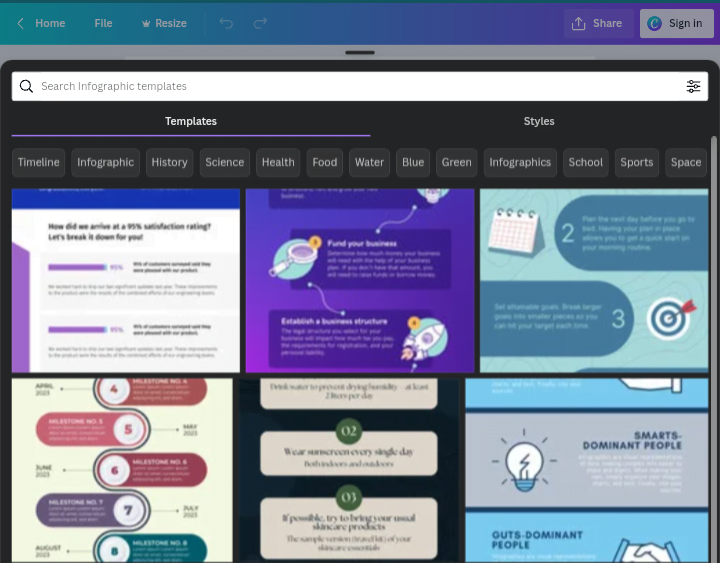
You can also use videos in your blog post. For example, if you publish a post on your blog and discover a video on YouTube that is relevant to that post, you can embed the video from YouTube and include it directly in your blog post so that your readers can watch the practical experience.
10. Reduce The Size Of Your Images
Large image sizes can slow down the loading speed of your blog or website, affecting user experience and search engine rankings. Therefore, reducing the size of your images is important for optimizing your blog or website performance.
Choosing the right file format can help you in reducing the size of your images. The most common image file formats are JPEG, PNG, and GIF. JPEG is best for photographs, while PNG is best for graphics and illustrations with fewer colors. GIF files are used for animations. Choosing the right file format can help you reduce file size without losing the quality of the image.
There are lots of free online image compression tools, like TinyPNG and Compressor.io that you can use to compress your image size before uploading them to your post. These tools reduce your image size while keeping its quality. If you use a CMS platform like WordPress, you can also use plugins like Smush or ShortPixel Image Optimizer.
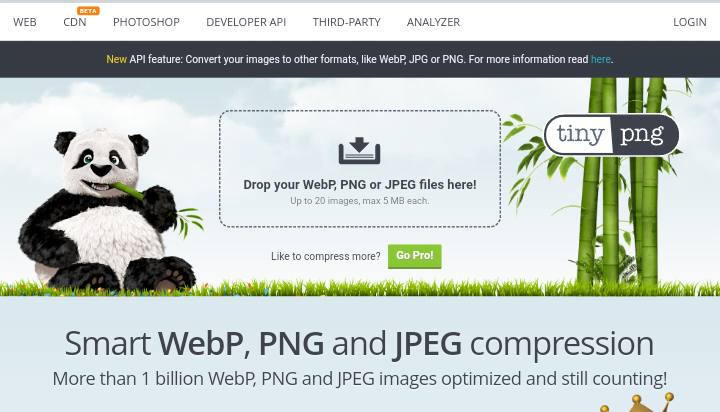
Aside from compressing the size of your images, you can also use a lazy loading plugin. Lazy loading is a technique that delays image loading until it is needed, which means that the images will only appear when a visitor navigates to them.
This can help reduce your blog or website loading time and improve its performance. If you use WordPress, you can lazy load your images by using plugins like WP Rocket or Litespeed Cache.
Also Read: How To Speed Up A Slow WordPress Website
11. Promote Your Blog On Social Media
Bloggers consistently create great content but fail to know the importance of promoting it. You will miss out on attracting interested readers to your blog if you do not have an effective content distribution strategy.
This includes promoting your blog on social media, sharing new posts with your email list subscribers, doing guest posting, and so on. Social media is an effective way to increase your blog’s visibility, reach a larger audience, and push more traffic to your blog.
Improve your social media profiles. Check that all of your social media profiles are fully functional and updated. Also provide a clear description of your blog in your social media platform’s bio section, as well as a link to your blog and a profile picture that represents your brand.
Use social media to promote your blog posts. When you publish a new blog post, make sure to share it on your social media pages. To get people’s attention, write a catchy headline, and use trending keywords, as well as an eye-catching image.
You can create social media groups like Facebook groups and engage with your audience by responding to comments and messages, and sharing other people’s content that is related to your niche.
12. Spy On Your Competitor’s Blog
Spying on your competitor’s blogs can help you improve your own blogging efforts. You can learn from your competitors’ successes and failures, as well as gain insight into their content, marketing, and promotional strategies.
Look for blogs that are similar to yours in terms of target audience and products or services offered. You can find blogs in your niche by using Google or other search engines. For example, if you have a fitness blog, you can search on Google for “fitness tips” the blogs that appear are your competitors; click on their blog to learn more about what they are doing.
Look at the type of content they publish, the topics or subjects they cover, and the format of their content. Take note of the length of their blog posts, the frequency with which they update, and the style and tone with which they write.
Check if your competitors are optimizing their blog posts for search engines (of which most do). Look for the keywords they are targeting, the meta tags and descriptions they are using, and the internal linking structure of their blog. To get a complete picture of their SEO efforts, use SEO tools like SEMrush or Ahrefs.
You can as well keep an eye on their social media accounts. Check how your competitors are using social media to promote their blogs. Look at their social media accounts to see how many followers they have. You can use a free tool like BuzzSumo to monitor your competitor’s social media activity and analyze their audience’s engagement.
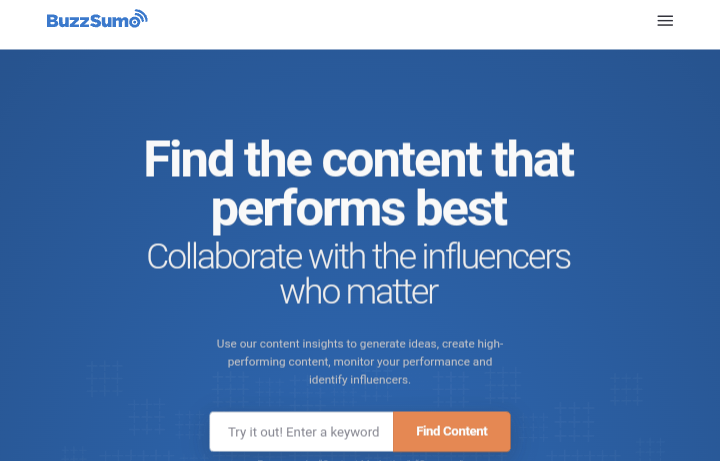
Finally, take notes and plan your content. Take notes on what works and what does not work for your competitors’ blogs as you analyze their blogs. Make a plan to implement their successful blogging strategies into your own.
13. Consistently Publish New Blog Posts
If you want to grow your blog’s audience, boost your search engine rankings, and establish yourself as an authority in your niche, you need to be consistent in publishing new blog posts on your blog.
Consistent is where many bloggers fail not only in blogging this applies in anything you are doing in life. Most bloggers quit blogging before they even start because they cannot keep posting new posts to their blogs consistently.
This is how to be consistent in publishing new blog posts. Decide the topics you’d like to cover, the audience you’d like to reach, and the keywords you’d like to rank for. Make an editorial calendar to plan out your blog posts way in advance.
Then create a publishing schedule that works for both you and your target audience. It is important to publish new blog posts on a regular basis, whether once a week, twice a week, or once a month. Stick to your schedule.
To make blogging a habit, track how long it takes you to write a blog post. For example, if you are always available on weekends, you can set aside a particular day to do keyword research, write the post, source images and publish it. This strategy keeps you from feeling rushed to create a high-quality post in a matter of days.
If you are unable to write your blog posts yourself on a consistent basis, you may wish to hire a freelancer from a freelance writing platform like Fiverr to help you with the blogging process. The freelancer can handle both the SEO and the writing of the post.
14. Update Older Blog Post
Updating older or previously published posts on your blog can help you in providing your readers with updated and relevant information. Search engines like Google love to see updated posts and reward them accordingly.
Look for blog posts that are out of date, incorrect, or irrelevant. Look for blog posts that are not ranking well in search engines or have low reader engagement. After you’ve checked for those blog posts, start updating the content. Make your content more relevant and up-to-date by adding new information, statistics, or examples. Replace outdated information with new and accurate information.
Add internal links to your updated blog post to improve your blog’s internal linking structure. Link to other relevant blog posts on your website to increase their visibility and search engine rankings.
Promote your updated blog post on social media, email newsletters, and other online platforms. Encourage your readers to share your updated blog post with their followers on their social media accounts. This will increase the visibility of your blog and bring more traffic to your website.
15. Use Tags To Organize Your Blog Posts
You can use tags and categories to organize your blog posts, which is an important strategy for improving user experience and making it easier for your readers to find relevant content.

Tags are different from categories. Both tags and categories are used to organize your blog posts, but they serve a different functions. Categories are broad topics that group related blog posts together, while tags are more particular keywords or phrases that describe your blog post’s content in greater depth.
Limit the number of categories to a minimum level of 4 to 6 are the recommended categories. Too many categories can make it difficult for your readers to find the content they are looking for. You can also use subcategories to help organize your blog posts within larger categories. For example, the “social media marketing” subcategory will be “marketing“.
Conclusion
To succeed in the highly competitive world of blogging, you need to follow these best practices to ensure that your blog posts are engaging, informative, and effective at driving traffic to your blog.
By following these best practices, you can create a successful blog that attracts and boost reader engagement, drives traffic to your blog, and establishes your blog as an authority in your niche.
We hope you found this blogging best practice helpful. If you liked this article, please share it on social media with others, especially those who want to grow their blog or website, and if you have any questions please leave them in the comments section below.
Here are some key points to remember about blogging best practices:
- Consistently publish new blog posts
- Update older blog posts
- Use tags and categories to organize your blog posts
- Optimize your blog posts for search engines
- Promote your blog posts on social media
- Write high-quality content

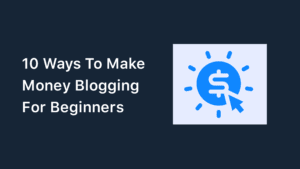





Special Web Hosting Offer | $2.99/mo